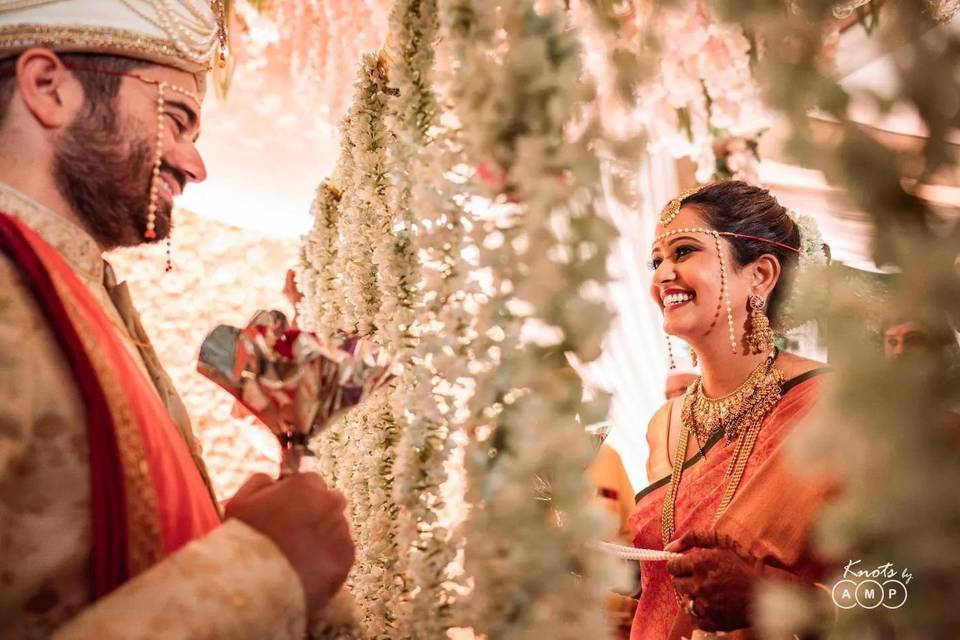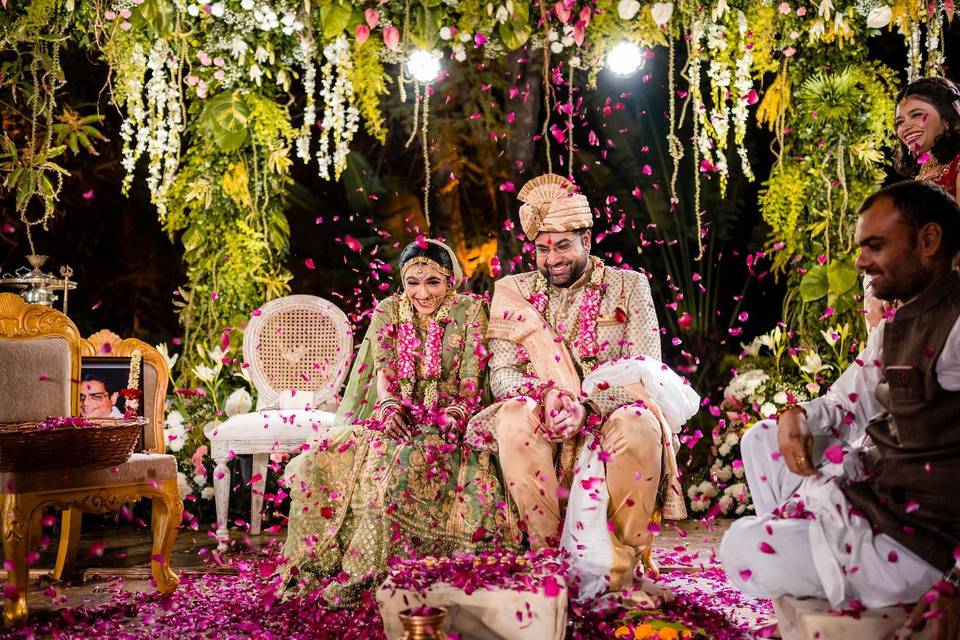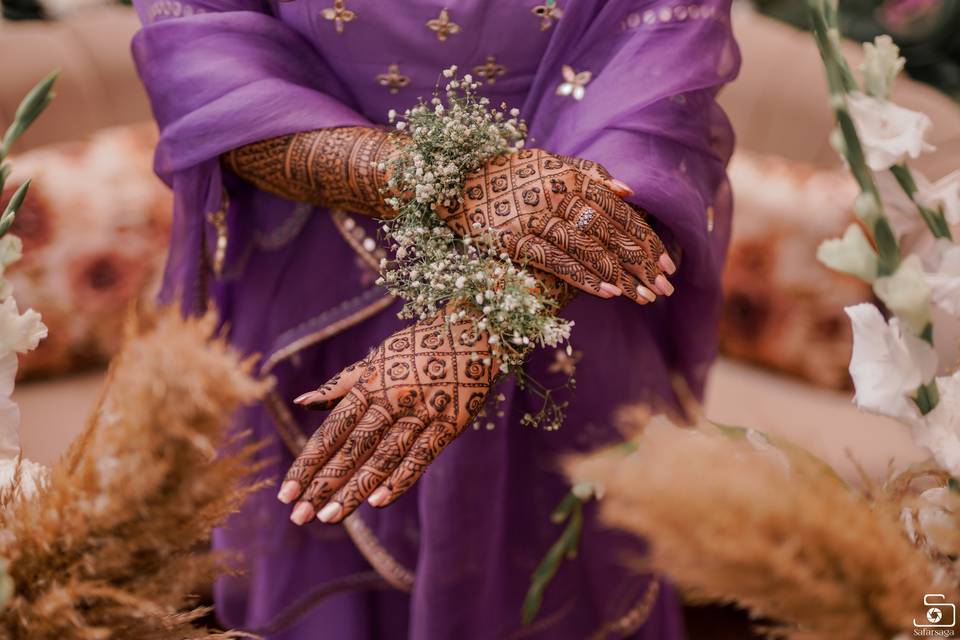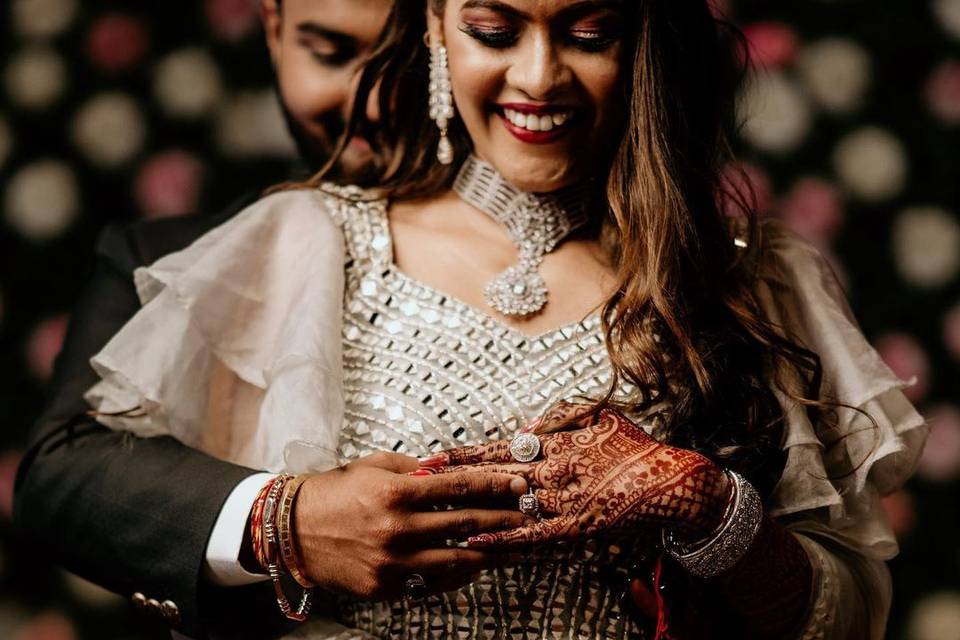Find out What Makes the South Indian Wedding Traditions from These 4 States Unique
Are you curious about South Indian wedding traditions? We bring you unique and fascinating wedding traditions from all across the four states of South India.
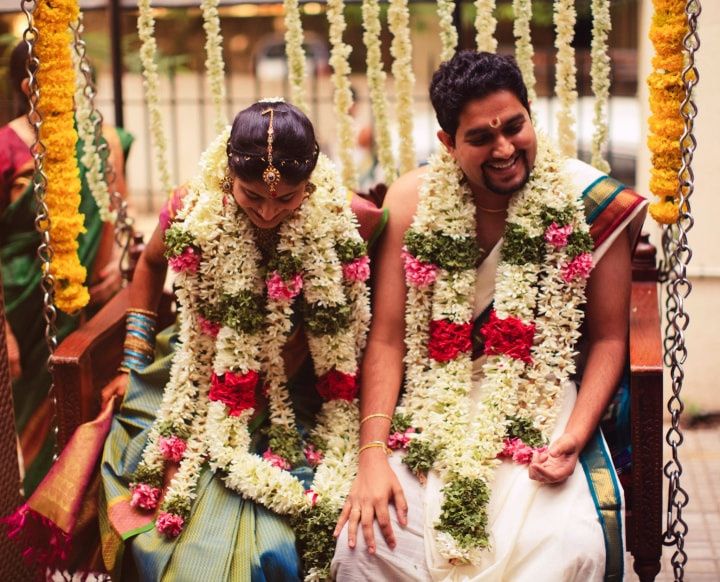

Nishchitartham, Lagnam, Kashi Yatra or Kanyadaan.. there are over twelve different kinds of South Indian wedding traditions observed in India. Some rituals are common across communities, whereas some traditions are absolutely unique. Each state has its own cultural flavour. Other than the wedding ceremonies, all these states have various kinds of bridal and grooms wear, food, music and ethnicities at different stages of a wedding. Take a tour through the exotic South Indian wedding celebrations:
Andhra Pradesh
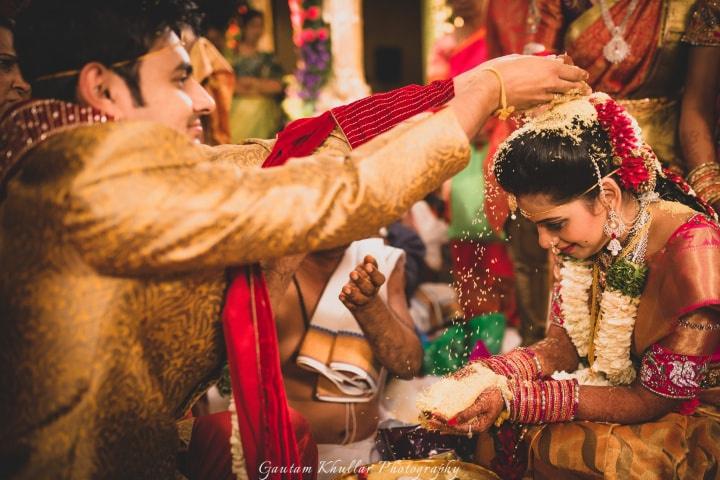
Telugu wedding:
1. Nishchitartham, Pellikuthuru and Snathakam - Engagement, Haldi-oil ceremony and the groom’s holy bath, respectively. Close friends and family members participate and gifts, clothes and sweets are exchanged
2. Kashi Yatra - A rather fun ceremony where the groom pretends to leave and not accept the marriage when the father and brother of the bride stop him and convince him to marry!
3. Mangal Sanan - The couple takes a holy bath on the wedding morning and gets ready for the Aarti and Gauri-Ganesh Puja to keep the evil spirits at bay
4. Jeerakalla-Bellamu - A paste of cumin and jaggery is rubbed on the couple’s hands depicting their eternal togetherness
5. Kanyadaan, Mangalsutra, Saptapadi - The bride’s parents give away their daughter to the groom at Kanyadaan. The groom ties the holy Mangalsutra around the bride’s neck and finally, the couple take wedding vows circling around the fire seven times
Also Read - Decoding Telugu Marriage
The Reddy wedding:
1. Patrika, Nisachaitartham - There is a formal invitation on a yellow cloth (Patrika) with betel nuts and leaves amongst both the families before the Engagement
2. Vara Puja and Paindipilla (Haldi) - The groom and his family are presented with foods and new clothes and both the bride’s and groom’s invitations are read out aloud. Then Haldi is applied on the bride for a pre-wedding glow
3. Vivaaham is quite a grand affair in a Reddy wedding. Young girls take the groom to the Mandap carrying an oil lamp, turmeric and rice, his feet are washed and aarti is performed
4. Muhurtam is the auspicious moment when the groom ties a Thaali (Mangalsutra) around the bride’s neck
5. Kanyadaanam and Sapthapadi
6. Sthaalipaakam - The groom puts a silver toe ring on his bride as a token of acceptance
Arya Vysya wedding:
1. Pendlikoothuru or the Haldi - All women are given sweets, flowers and bangles
2. Snathakam - The groom puts a silver thread on his body
3. Kashi Yatra Mangal Snanam, Aarti, Gauri Ganesh Puja, Kanyadaan, Mangalsutra, Kanyadaan Akshata, and Jeelakarra-Bellamu are the common rituals performed in most South Indian weddings.
4. Grihapravesh is the welcome ritual of the bride in the new family
Karnataka

Kannada weddings are usually short that go on for one or two days. Here are the major South Indian wedding traditions in Karnataka:
Kannadiga wedding:
1. Nishchay Tamulam - The horoscopes are matched, and the wedding date is fixed. Clothes, sweets, coconut and betel leaves are exchanged
2. Naandi - Puja performed by the family priest to ensure a peaceful wedding. The first marriage invitation is offered to the Almighty seeking His blessings
3. Dev Karya - The groom takes blessings from all the neighbourhood temples before going to the wedding
4. Kaashi Yaatra, Mandap Puja, Var Puja, Jaimala, Saptapadi, Dahreherdu (Kanyadaan), Vidai and Griha Pravesh are some of the common traditions practised in most South Indian weddings
5. Okhli is a ceremony of games and playful customs played between the bride’s and groom’s families
The groom wears a white cotton or silk dhoti with thin borders tied around the waist. He pairs it up with a silk scarf and a turban. The bride wears a colourful Navari saree with glass bangles, gold necklaces and Maang Tikka.
Also Read - Decoding Kannada Weddings
Coorgi wedding:
Possibly the most unique tradition among all kinds of South Indian weddings, a Coorgi wedding has just a few simple steps:
1. There are no priests involved in the actual wedding. The bride wears a family heirloom saree passed on for generations for good luck and a veil
2. Before the wedding, the families pray to their ancestors and the women pray to Fire Gods before the cooking
3. Both families sing to Dudi Kot Patt (Sangeet) songs and dance while getting ready for the wedding
4. The Bride and the groom exchange Jasmine garlands and they take a sip of milk from a glass. The newly wedded couple touch feet of elders for blessings
Ganga Puja takes place at the groom’s house and the new bride is asked to break a coconut, get water from the river and playfully teased by the male family members As a final celebration, everyone feasts on Coorg’s famous pork delicacy- Pandhi curry and drink to rejoice.
Bunt or Nadavas wedding:
1. Nikshaya - The bride’s family carry a silver plate containing betel leaves, betel nuts and flowers to the groom’s house for formal introductions and fixing of the wedding date. Nowadays, couples also opt for an elaborate engagement ring ceremony amongst the two families
2. Madarengee - Mehndi
3. Mangalasnanam - Holy bath
4. Murthasese - A very significant Bunt wedding tradition. Just a day before the wedding, the girl is dressed up in Kanchipuram silk saree and gold waist Patti and is seated near the Tulsi plant facing east. Everyone blesses her with rice grains, turmeric and kumkum. Married women put bangles on her hand including one black bangle to ward off evil.
At the groom’s house, his aunts put a gold toe ring on the groom and every one blesses with rice grains.
5. Muhurtham or Lagnam
6. Dhareyeruna (Kanyadaan)
7. Homam - Lighting sacred fire where the bride’s brother puts puffed rice in the bride’s and groom’s hands, which they then offer to the fire as a sacrifice
8. Saptapadi
9. Sese Padunu - Everyone blesses the couple with raw rice, turmeric and kumkum
10. Neer Maipunu - After the wedding, the bride and the groom pray to the Sun God. Then the bride’s mother gives the couple to share a tender coconut
11. Ponni Vocchidu Korpunu - All the women in the bride’s family sing and praise their daughter to groom’s family
Kerala
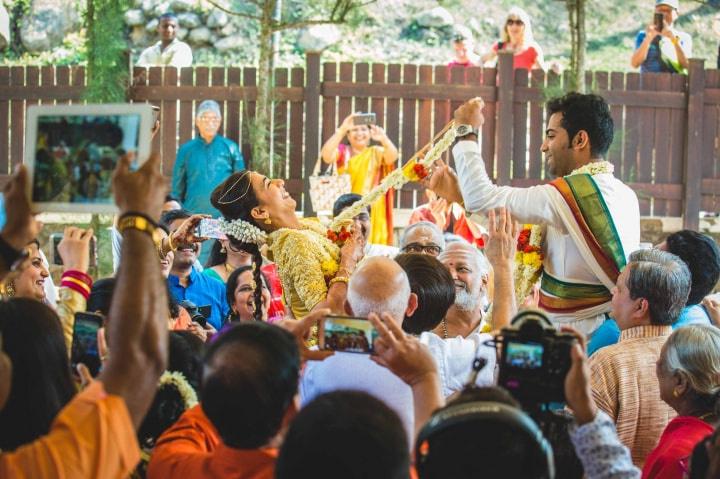
Three communities having three different religious backgrounds practise wedding traditions in Kerala. Some are unique and some common South Indian wedding traditions from the state:
Christian wedding:
The bride dresses up in golden bordered white saree and wears gold jewellery and a white veil with a crown on the head. The Christian wedding traditions in Kerala are precise:
1. Engagement or the Ring ceremony
2. Bachelor’s/Hen’s party
3. Haldaat or Haldi wherein sandalwood paste is also applied along with Haldi
4. Holy wedding - The wedding is performed by the church priest who reads the Holy Bible. Then a sermon called Homily based on marriage’s sacredness is followed
5. Mangalsutra or the Thali
6. Matrakodi (wedding saree) is gifted by the groom and the bride is to keep this saree and the Mangalsutra with her forever
Nair wedding:
It’s important to stage the wedding Kalyan Mandap in a particular fashion in a Nair wedding. South Indian wedding traditions peculiar to Nair weddings are:
1. Mahuratham - The matching of horoscopes and fixing of auspicious wedding date and time
2. Nishchayam - Engagement
3. Mehndi
4. Dakshina Kodukkal - Before going to the wedding venue, both bride and the groom take blessings from elders by giving Dakshina
5. Kanyadaan
6. Padamuri - The groom gifts a saree to the bride vowing to take her responsibility forever. The couple exchange garlands and elders bless the couple with gifts
7. Sandhya or a meal is served to the couple consisting of 25 items.
8. Grihapravesh and Aarthi
Muslim wedding:
1. Valaidal or “Wear the Bangle” ceremony for the official announcement. More jewellery are gifted
2. Naal Nishchayam or fixing of wedding date and time
3. Mailanchi Raavu or Mehndi which also follows by singing and dancing. All women sing Mappila Paattu (Sangeet songs) and tease the groom
4. Nikaah - The official marriage contract held either at the mosque or at some wedding venue presided by a priest
5. Feast - Exotic Malabar cuisine is served for the feast. Biryanis and Sulaimani chai are the must-have ones
6. Araayil Koodal - Malabar Muslims follow matrilineal tradition and enters the bride’s house. The newlyweds are blessed, welcomed and left to spend time together
7. Veettil Koodal - This is when the couple visits the groom’s house, receives gifts and celebrate a grand bridal party
8. Salkaaram or the reception party is where family and friends gather to celebrate
Tamil Nadu

Chettiar wedding:
Chettiar weddings are very elaborate and go on for about 6 days:
1. Muhurthkalam and Nichayadartham (Engagement)
2. Padaipu - Honouring the ancestors by cooked food
3. Arasanikkal and Mattru Kattuthal - The wedding platform is decorated with bamboo sticks and yellow cloth for covering
4. Pooram Kazhitha - Holy bath of the bride and decorating her with gold chains and neem leaves
5. Azhagu Arathy and Ganesh Puja - The paternal grandmother of the groom blesses him and performs Puja before going for the wedding
6. Mangalasutra/Thaali and then the couple takes seven rounds around the sacred fire
7. Isaivu Pidimanam or a marriage agreement is made by the priest
8. Padapuja, Kulam Vazhum Pillai and Thumbu Kattudal - After the bride is welcomed in the new family, the sister and mother touch the bride’s head with sacred ash and turmeric for twenty-one times. Then the bride washes her mother-in-law’s feet using betel leaves. The bride is given the responsibility of the house and a matrimonial thread is tied around her neck
Gounder wedding:
Gounder weddings are mostly based on old Tamil age wedding traditions with a few variations depending on availability:
1. Porutham Parthal - Horoscope matching
2. Sagunam Parthal - Looking for favourable wedding omens and then visiting each other’s families
3. Nichyadhaartham - Both the families exchange plates of auspicious items like turmeric, betel leaves and fruits before acceptance of the marriage proposal. And then an appropriate date and time of the wedding is fixed
4. Naal Virundhu, Muhurtha Kaaland and Muhurtham are part of the three-day-long Gounder wedding. There are feasts on the first day. On the second, the wedding platform is decorated along with the beating of drums. On the third day, the bride and the groom wear traditional outfits while the groom ties the Thali. Sacred instruments are played while the couple exchange garlands. And finally, the marriage responsibilities are blessed on the couple.
5. Mangala Vaazthu is a sacred wedding song describing the holiness of marriage. This is sung to bless the new couple
6. Aarathi Eduthal is performed after the wedding ceremony. The women hold and move a plate of turmeric and lime water in front of the couple to protect them from the evil eye
7. Senjoru Aindhadai Suttrudhal & Arugumanam Seidhal - getting rid of the evil eye
8. Kalyana Virundhu - grand vegetarian feast served on plantain leaves to celebrate the marriage
Brahmin wedding:
1. Pandh Kaal Muhurtham - The families bless the bride and the groom and worship God for a hassle-free wedding
2. Vratham - The families fast on the day before the wedding for a prosperous marriage. The women soak grains in a pot of water overnight and later immerse the pot in a pond
3. Jaanavasam - The groom is welcomed with fireworks, music and Aarthi
4. Nicchiyadhartham - The bride and groom receive gifts, sarees, jewellery, fruits and blessings from each other’s families
5. Kashi Yatra
6. Oonjal - The bride and the groom sit on a swing and drink banana milk. The families sing traditional songs to ease the couple off the wedding stress
7. Kanyadaan like other communities, the father of the bride washes the groom’s feet and puts a Kajal dot on his face in a Brahmin wedding. The bride is gifted a nine-yard Madisaaru saree
South Indian wedding traditions are varied, extensive and colourful. Where there are intense rituals like Porutham Parthal and Naandi, fun and playful traditions like Kaashi Yatra or Mailanchi Raavu are also very fondly performed in most weddings. Where a Nair bride elegantly drapes a white saree with golden borders, a Nizami bride opts for a gorgeous lehenga, a Coorgi bride wears colourful saree with a length above heels with a veil tied at the back of the head in a typical mountain-girl fashion. Such diverse customs and traditions, yet there is one common foundation of every South Indian wedding - the bond of eternal togetherness adorned with cultural ornaments.
How many have you seen in real life? Tell us about your experiences in the comments below.
- With inputs from Alakananda Bhattacharya.









